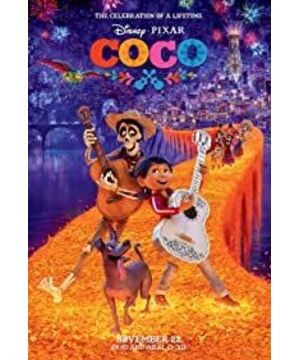Of course, it is inevitable that I read it with snot and tears. And early on, the moment MiG entered the ghost town, tears began to flow into his eyes. At that time, the tears were not because of being moved, but I think it was probably because of seeing how wonderful the world on the other side was, a sense of relief fanned by the fear of subconscious death. Seeing what death can be such a joyous sight, there is a mixture of great fear and great joy that is unspeakable.
Ghost towns are like mirror images of the world. People are afraid of ghosts, and ghosts in ghost towns are afraid of people. There is a hierarchical order in the human world, and there is also the difference between prosperity and forgotten shabby islands in ghost towns. After all, people can't imagine things outside their own world, and all imaginations are just shadows that can't break free from the ground. However, although human imagination cannot lead people to truly escape from the real world, it can lead people to escape from the oppression brought by the real world. In such a joyous imagining of death, one can enjoy the greatest spiritual freedom. Beyond fear, depression, helplessness, intoxicating freedom drunk with joy.
In fact, it's about the same old-fashioned topics of dreams and family, self and others, love and selfishness. And all the reversals I can accurately guess before it comes. But why I am still moved, I think it is precisely because this way of narration already has an extremely accurate grasp of the common psychological mechanism of human beings. I believe that behind telling a good story is not just the narrative that happens, but also the precise calculations of science. So almost every audience member in the theater can evoke a very uniform wave of sentimentality at the same point. When it's added to the tinny banter, the subtle hilarity, we're bombarded with joy and sentimentality in theaters. This ghost story from the Mexican tradition has been processed into an extremely delicate industrial artwork in Pixar's DreamWorks. It brings storytelling to a very refined level. So it deserves to be in the ranks of excellent animated films.
On the premise that everyone can find the shadow of their own life in it, it is almost inevitable to be touched. How many of the high-scoring reviews are for the movie itself, how many are for my own story, and thanks for being comforted. However, the judgment of art has never been able to avoid the preferences and experiences of perceptual individuals.
However, I always felt that something was missing. And this feeling of something missing comes precisely from its delicacy. It's too delicate, stepping precisely on the ups and downs of every emotion, delicately framing every artful twist, delicately framing the proportions and relationships of the characters. Beneath this delicate net, each character must play the symbols and functions that he must have, so the song god must be a bad guy, the great-great-grandmother needs to reveal her forgiveness, the family needs to reconcile, the MiG needs to grow and return. All characters need to sacrifice some complexity to make this perfect story. It's an inevitable breakup, at the behest of an exquisite story. Because its natural properties require creators to sacrifice branches to maximize the role of structure. As an audience, I seem to have less space to participate. With its emotional ups and downs, it seems like the only thing that needs to be done in this full story that has been told. So it is a pity that, while creating a beautiful palace, it also closes the space and possibility for this story (the palace) to be continuously explained (opened). Then again, perhaps the interpretation wasn't what it expected. It’s just a little bit of participation and freedom that I, as an individual audience, want.
View more about Coco reviews











